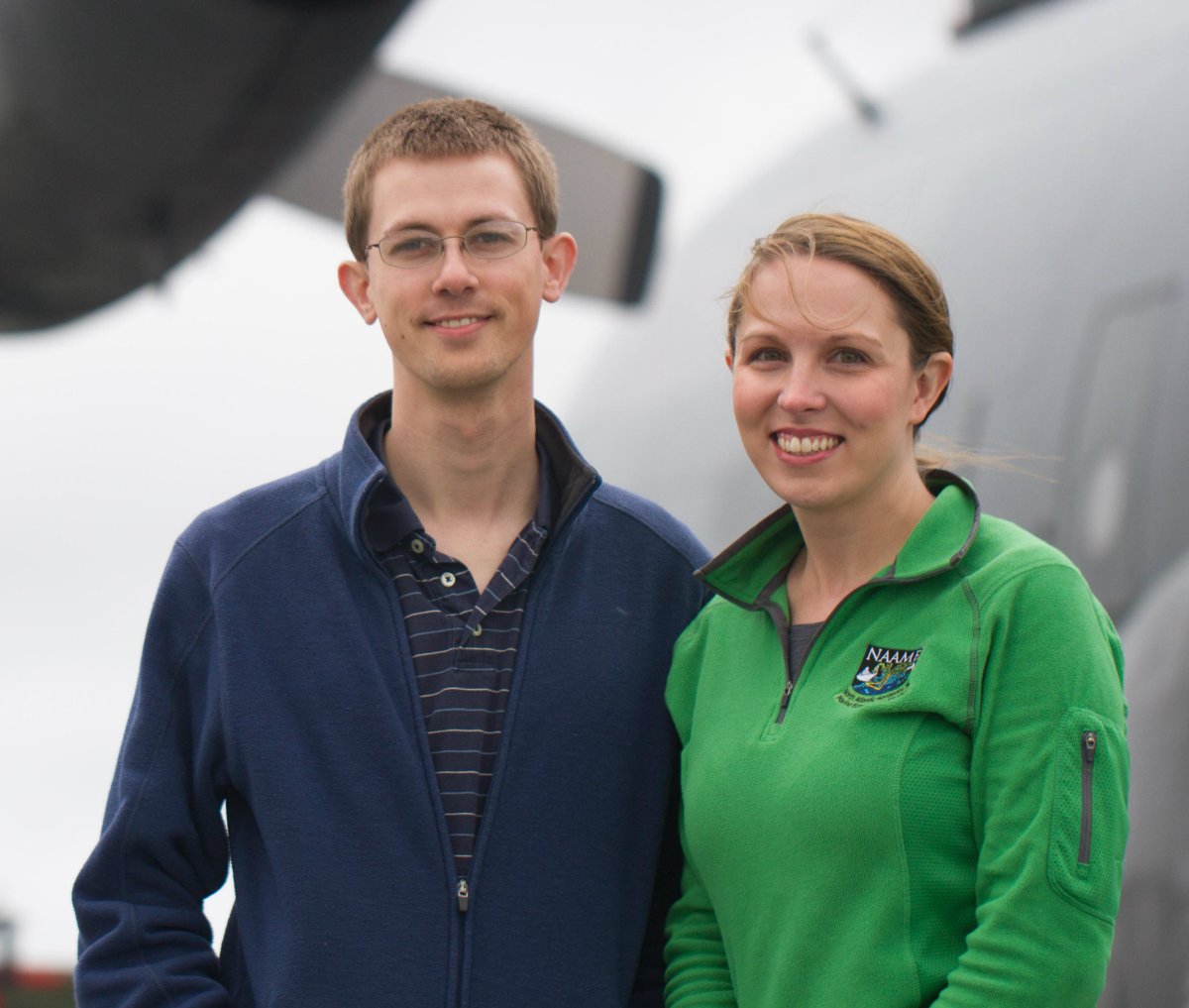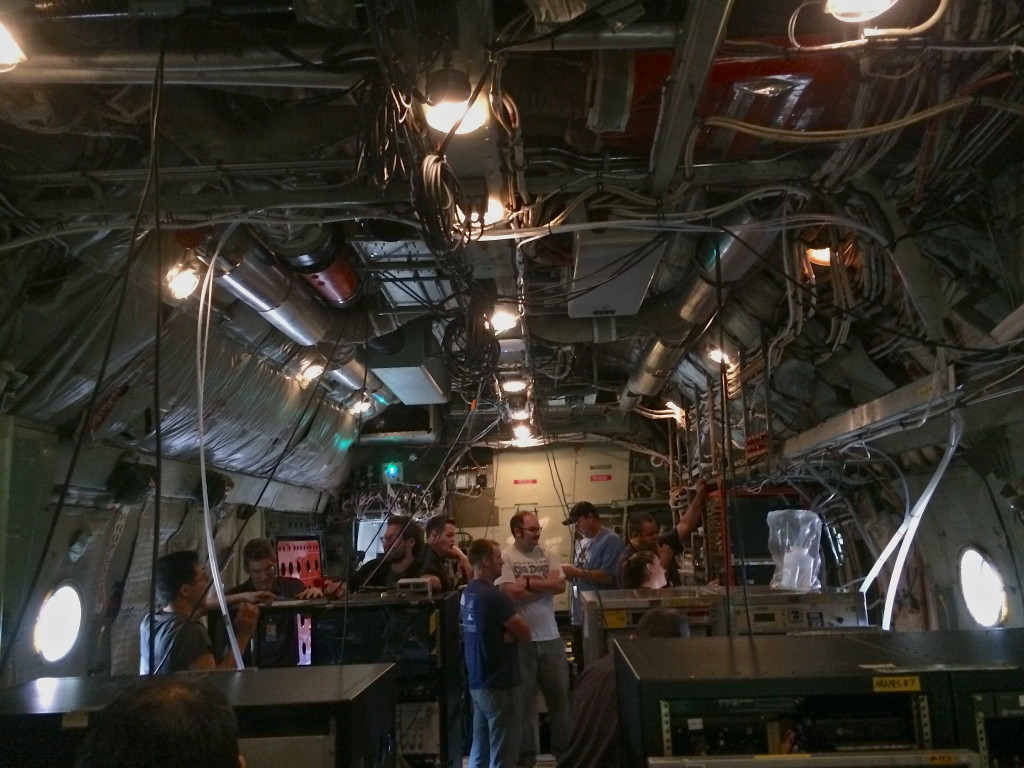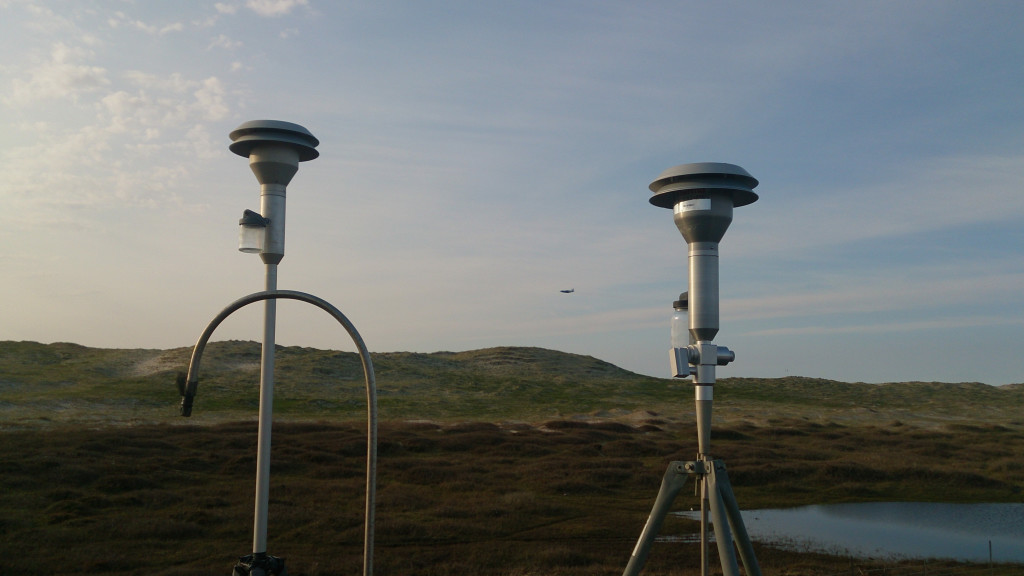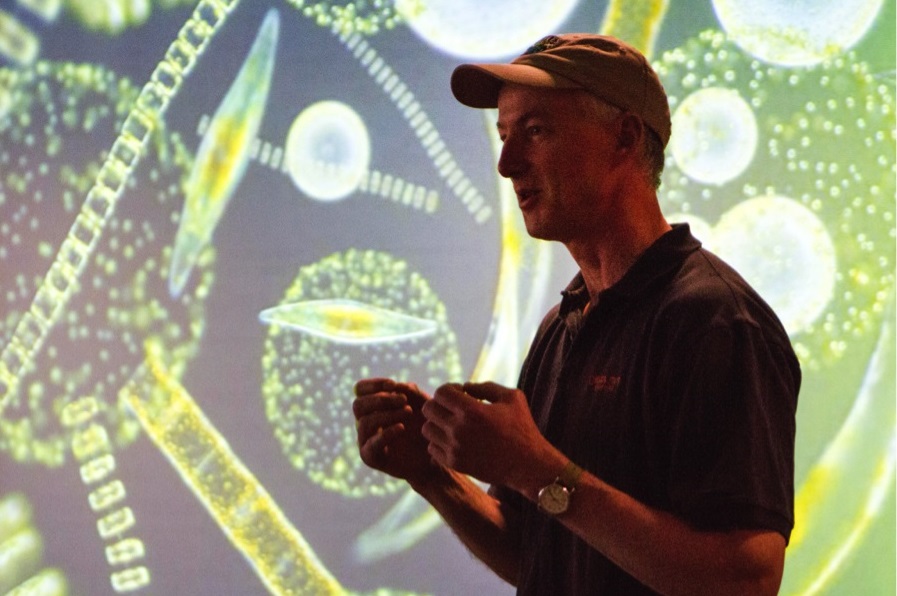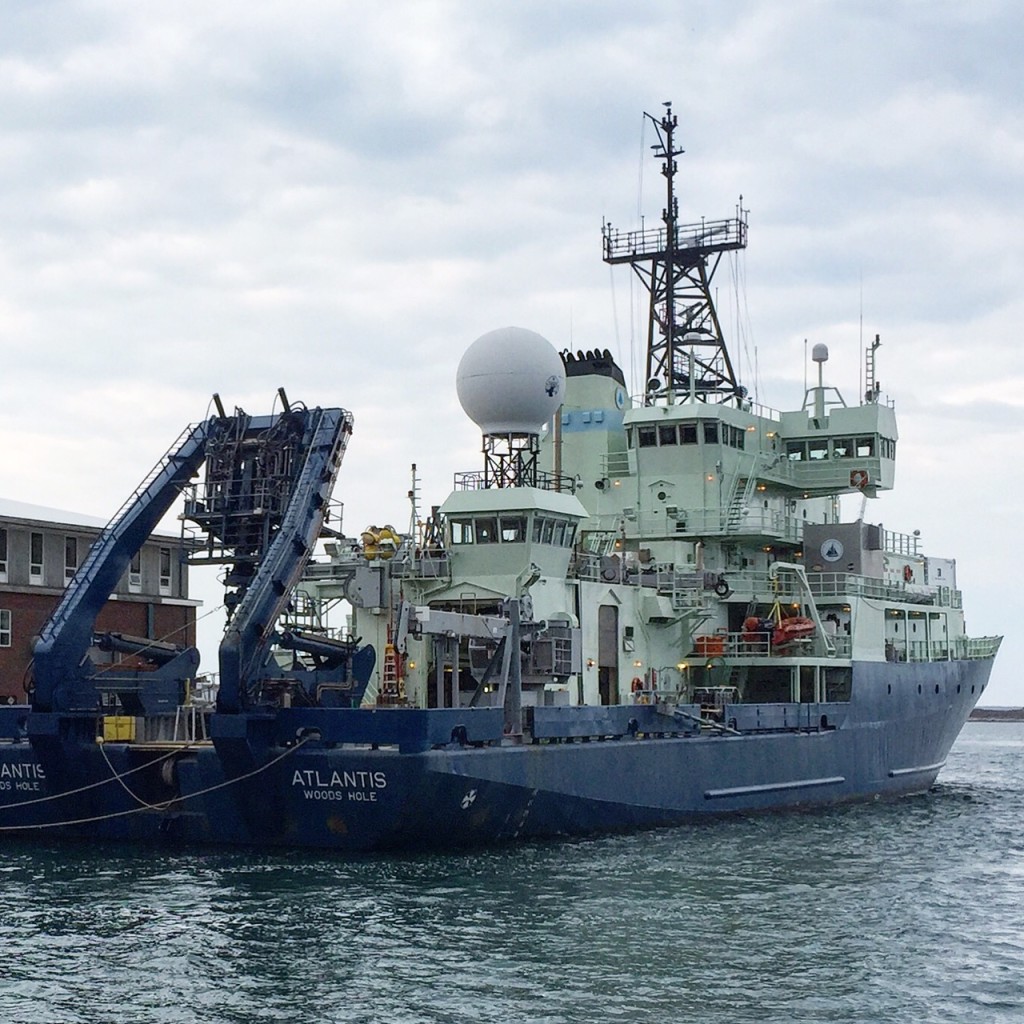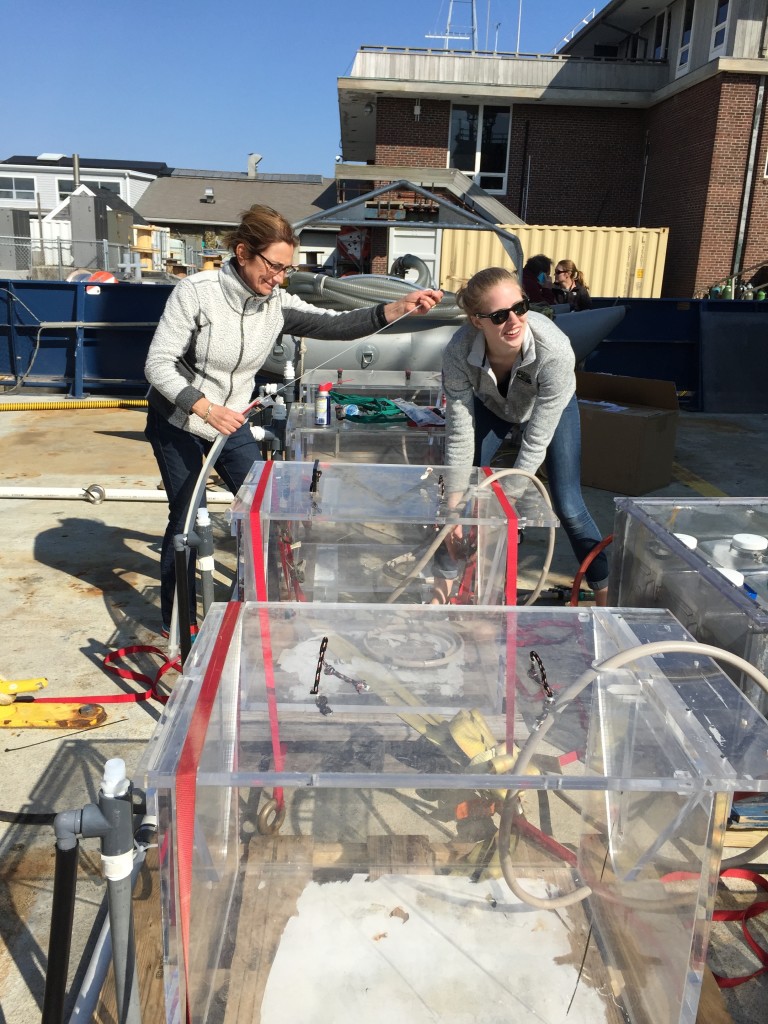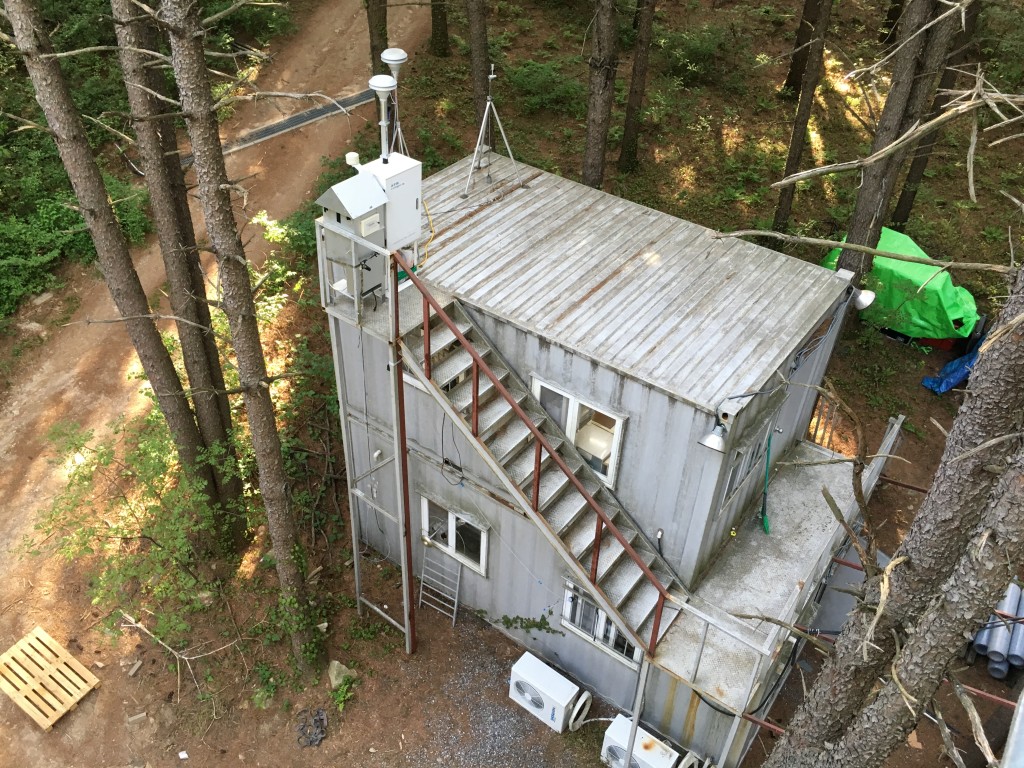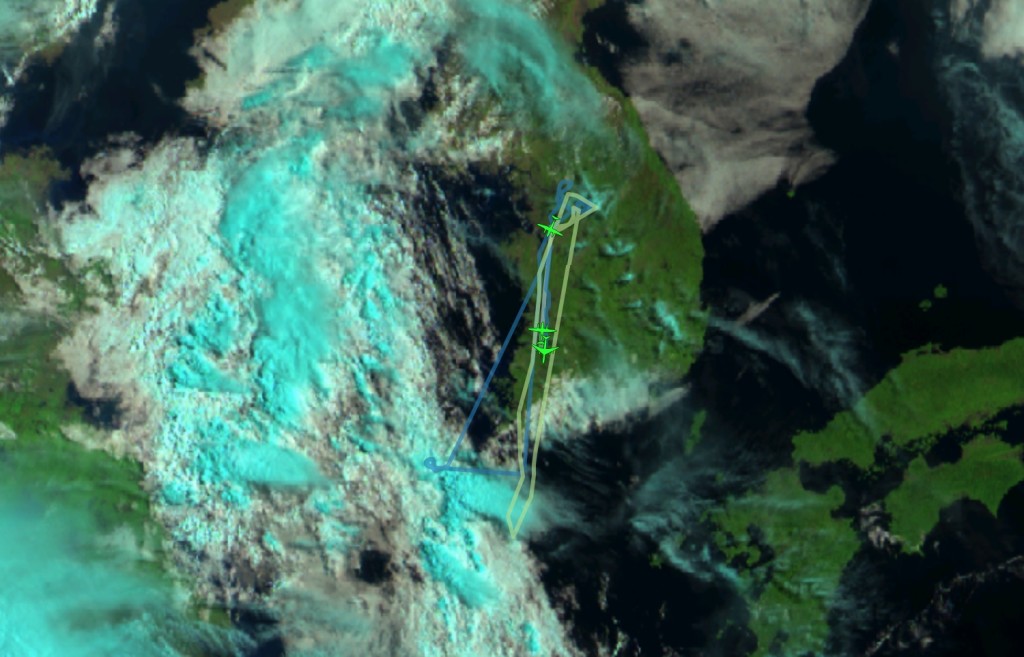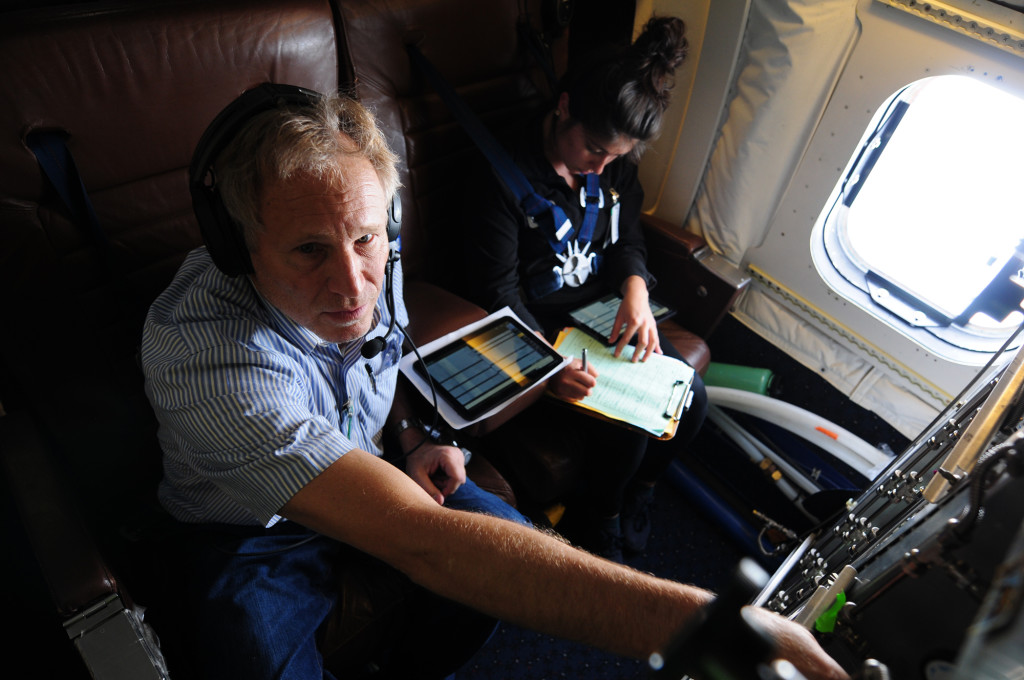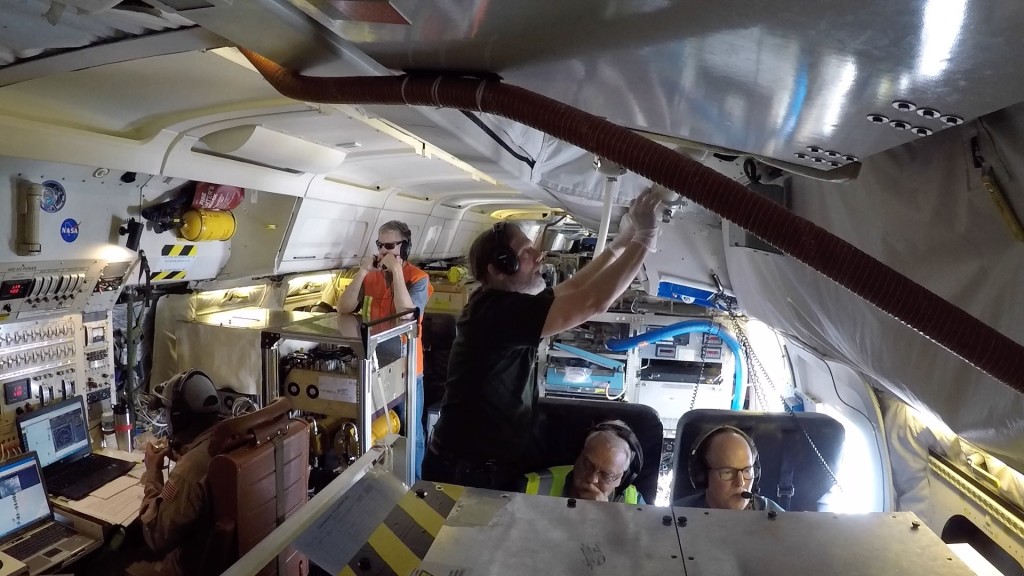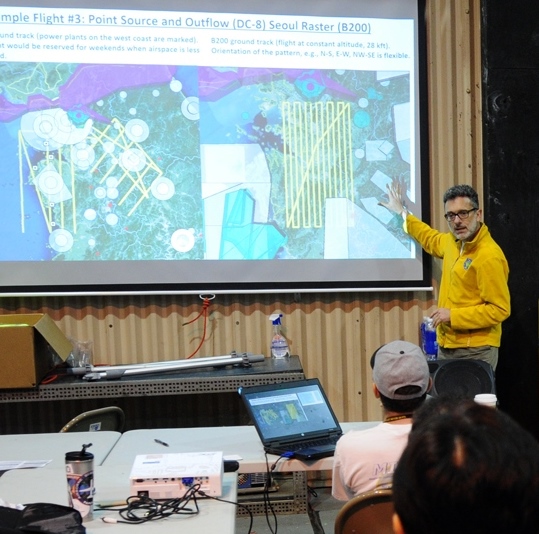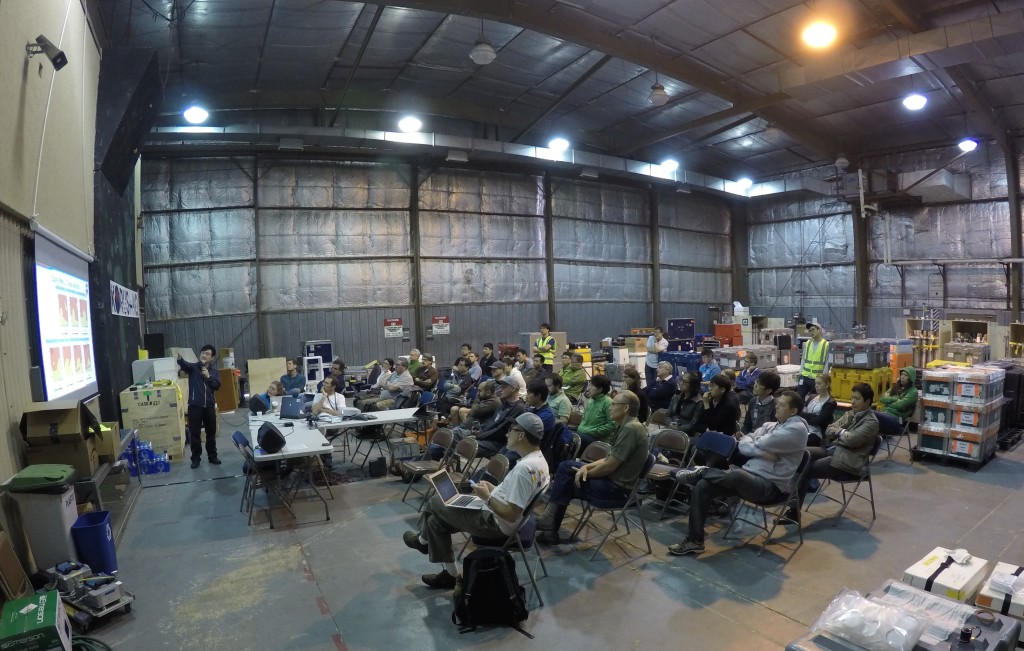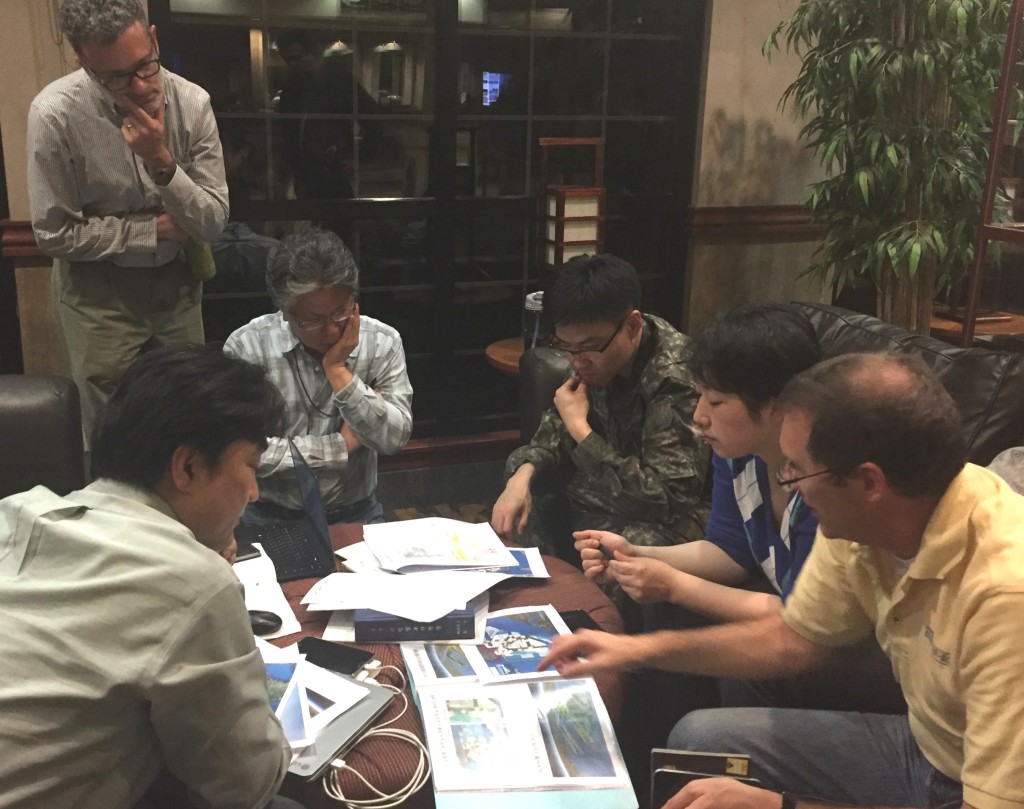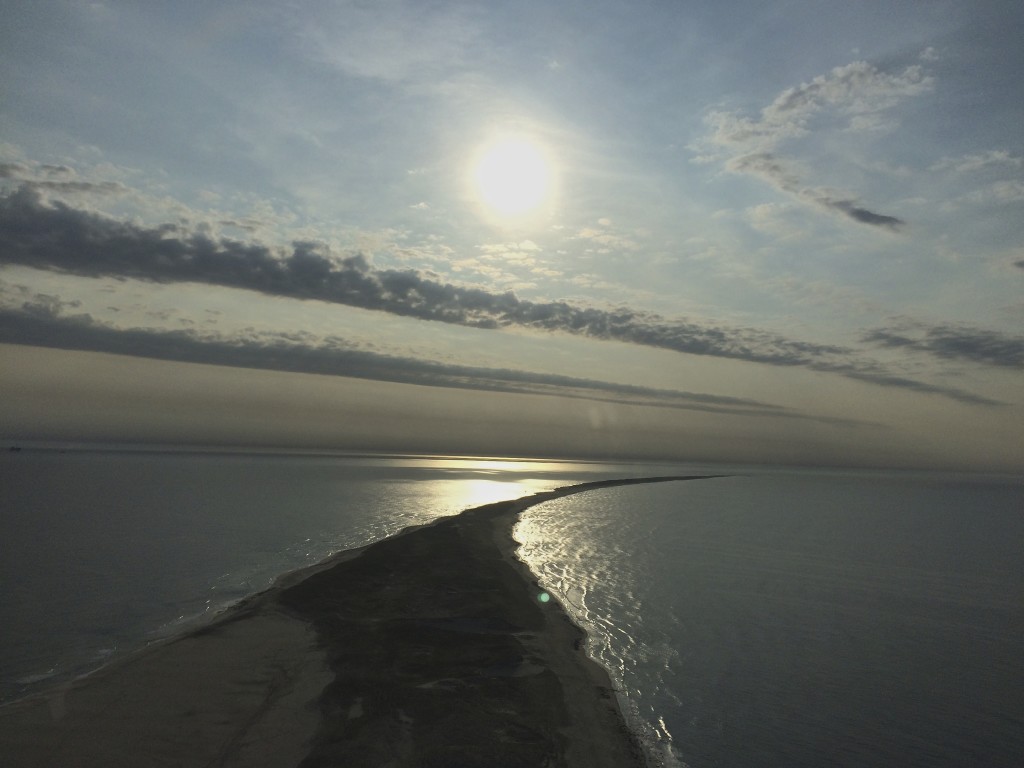
by Denise Lineberry / ST. JOHN’S, CANADA /
Sometimes, researchers don’t find data as much as the data finds them. Such was the case for the transit flight on May 13 from NASA’s Langley Research Center to St. John’s International Airport to support NAAMES, or the North Atlantic Aerosols and Marine Ecosystems Study.
The mission focuses on collecting biogenic or marine aerosols — far away from land and away from human influence. After all, about 71 percent of Earth’s surface is water, and the oceans hold about 96 percent of it. It can be easy for the everyday person on land to overlook the massive influence that the ocean has on the atmosphere and climate. But by air and sea, NAAMES researchers work tirelessly in the field to study this connection.
Flying over narrow, crescent-shaped Sable Island in Nova Scotia, some 185 miles southeast of Halifax and home to only a handful of residents, is a great place to collect biogenic data and validate aerosol instruments from a ground site on the island.
NAAMES researchers flying over during the transit flight on NASA’s C-130 at 3,200 feet didn’t expect to fly through an extensive smoke plume. But that’s exactly what happened.
Along the aircraft’s track, the plume appeared as a haze, but the scientific instruments on board the aircraft would get a much better view. The instruments, along with measurements from a ground station on Sable Island, measured the vertical extent and composition of the plume. To do this, they ascended and descended in spirals over the island to fully capture the plume’s variations.
Onboard, the LARGE, or Langley Aerosols Research Group Experiment, in situ suite captured aerosol features in the marine boundary layer and upper troposphere. Langley’s HSRL, or High Spectral Resolution Lidar, also captured data on smoke features in the marine boundary layer of the atmosphere, widely influenced by the ocean.
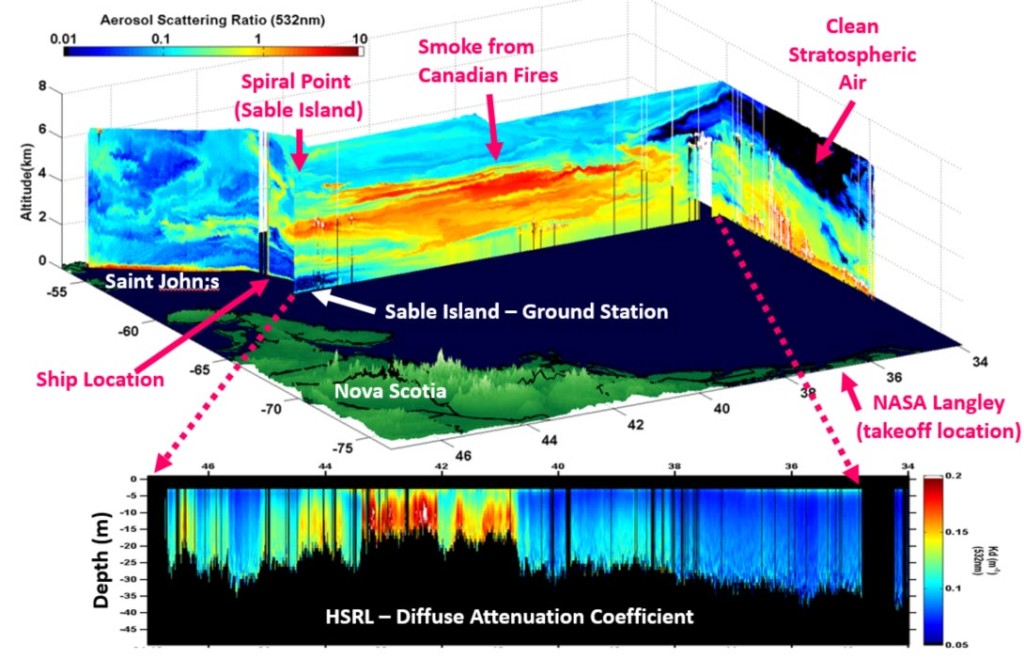
The curiosity that makes a scientist, well, a scientist, kicked into full gear. They wanted to know where the plume came from.
They knew of wildfires, which began on May 3 just southwest of Fort McMurray and proceeded to sweep through the community, resulting in Alberta’s largest wildfire evacuation. But to see from where else the plume could have originated, they looked at a map from the Canadian Wildland Fire Information System.
From there, they were able to create a forward trajectory of fires using the National Oceanic and Atmospheric Administration’s Hybrid Single Particle Lagrangian Integrated Trajectory (HYSPLIT) Model, and determined that the plume over Sable Island came from fires near Winnipeg. Earlier this month, two massive forest fires broke out on the Manitoba-Ontario border covering about 75,000 hectares at its peak, resulting in the evacuation of two provinces. Since then, it’s been 60 percent contained. The plume from the fires traveled about 1,700 miles to Sable Island in Nova Scotia, where it was detected by NASA’s C-130.
“It is well known that biomass plumes from large forest fires are transported a great distance across the globe,” said NAAMES research scientist John Hair. “It will be interesting on this flight to connect the aircraft measurements made in the atmosphere and the ocean, and relate them to what the satellite saw on the same day.”
The NAAMES team will further study the plume data gathered from the transit flight with help from student researchers making corroborative data from the Sable Island Ground Station, the only permanently staffed facility on the island.
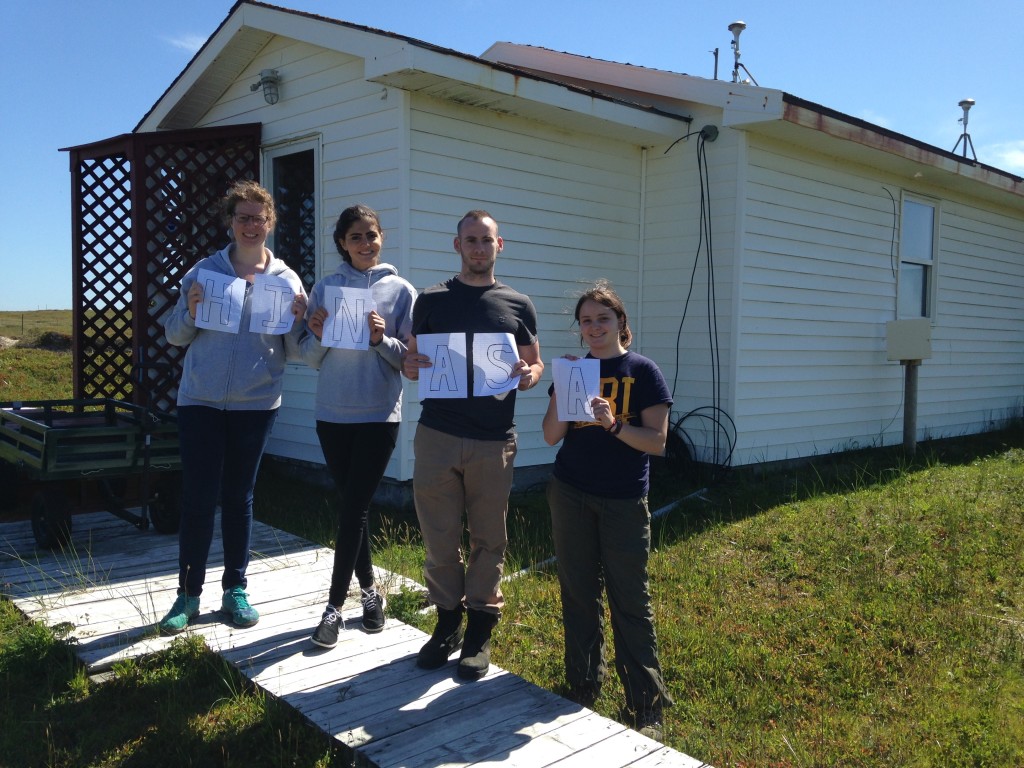
The team was pleased that the plume’s trajectory does not reach as far out as their NAAMES mission study area, approximately 500 nautical miles off the coast of the North Atlantic, where marine aerosols and the research vessel Atlantis roam free. That’s where they were headed for their first official science flight on May 18.
From plumes rising from massive fires to aerosols rising from microscopic marine life – everything on the land, in the ocean and in the atmosphere plays a part in Earth’s interconnected system. And some very curious NAAMES researchers are on the case to understand a massive part of that system better than they ever have before.

